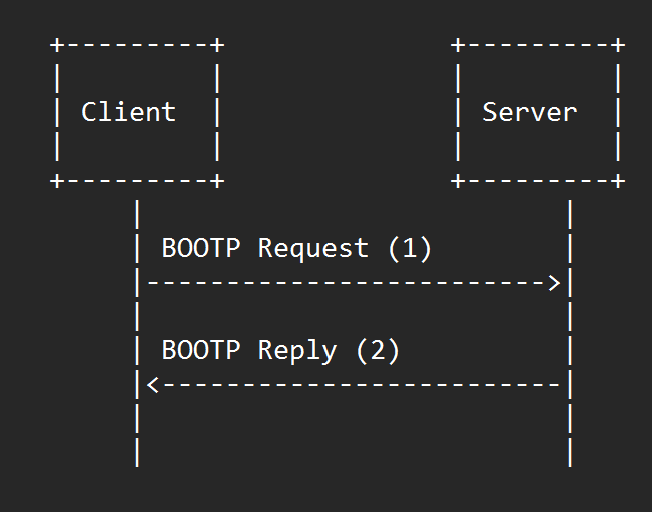Bootstrap Protocol (BOOTP)

BOOTP
Bootstrap Protocol
BOOTP was primarily used in diskless workstations or thin clients that relied on a network boot process to start up and access operating system resources from a remote server.
Port: 67 UDP | RFC:951
OSI Layer: 7 (Application Layer)
Cyber Security Stance:
Designed by Vivekanand Padala
Protocol Overview
The BOOTP protocol was developed in the 1980s as a way to automate the process of configuring diskless workstations, which were commonly used in thin-client computing environments.
BOOTP uses User Datagram Protocol (UDP) to communicate between the client and server
The protocol is relatively simple and straightforward, but it has some limitations, such as a fixed-length packet format that limits the amount of data that can be included in a BOOTP message.
BOOTP workflow
- A diskless workstation or other networked device sends a BOOTP request packet to the network broadcast address (255.255.255.255) using UDP port 68.
- A BOOTP server on the network receives the request and checks its configuration to determine if it can provide a response. The server may use the source IP address and/or other information in the request to identify the specific client.
- If the server can provide a response, it constructs a BOOTP reply packet containing the necessary configuration information, such as the client's IP address, subnet mask, and default gateway. The server sends the reply packet back to the client using UDP port 67.
- The client receives the reply packet and uses the information it contains to configure its network interface. The client may also use other information provided by the server, such as the name of the boot file to load from the server, to complete its startup process.
- If the client needs additional configuration information or resources, it may send additional BOOTP requests to the server, or it may use other protocols or methods to obtain the necessary information.

